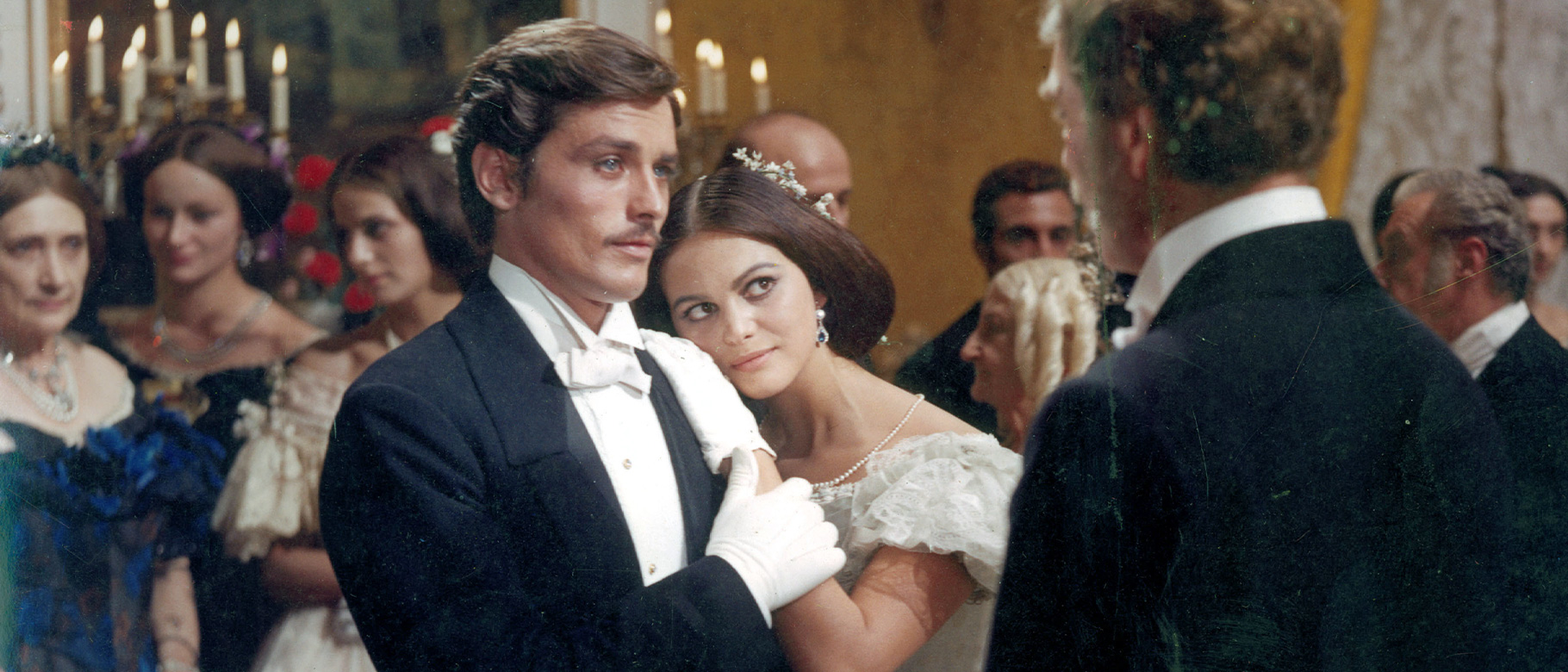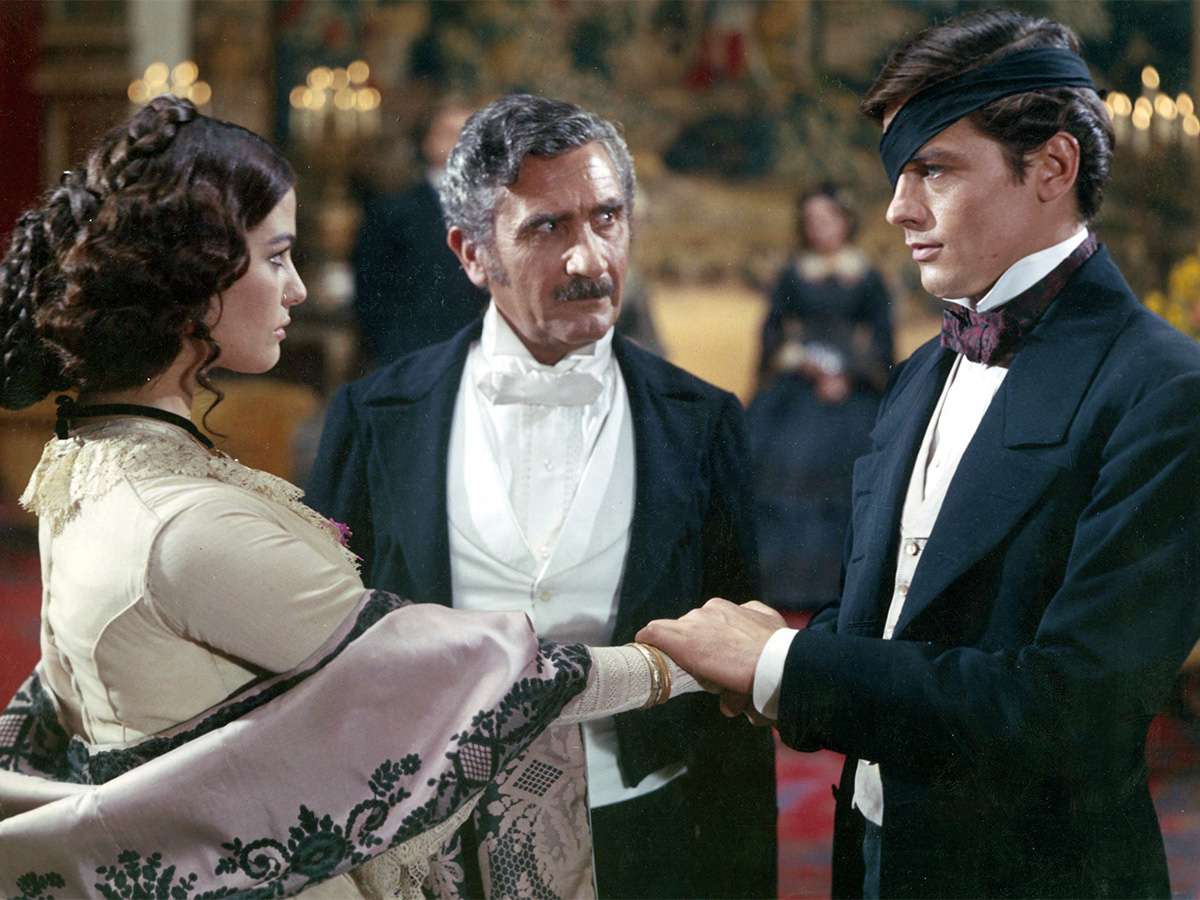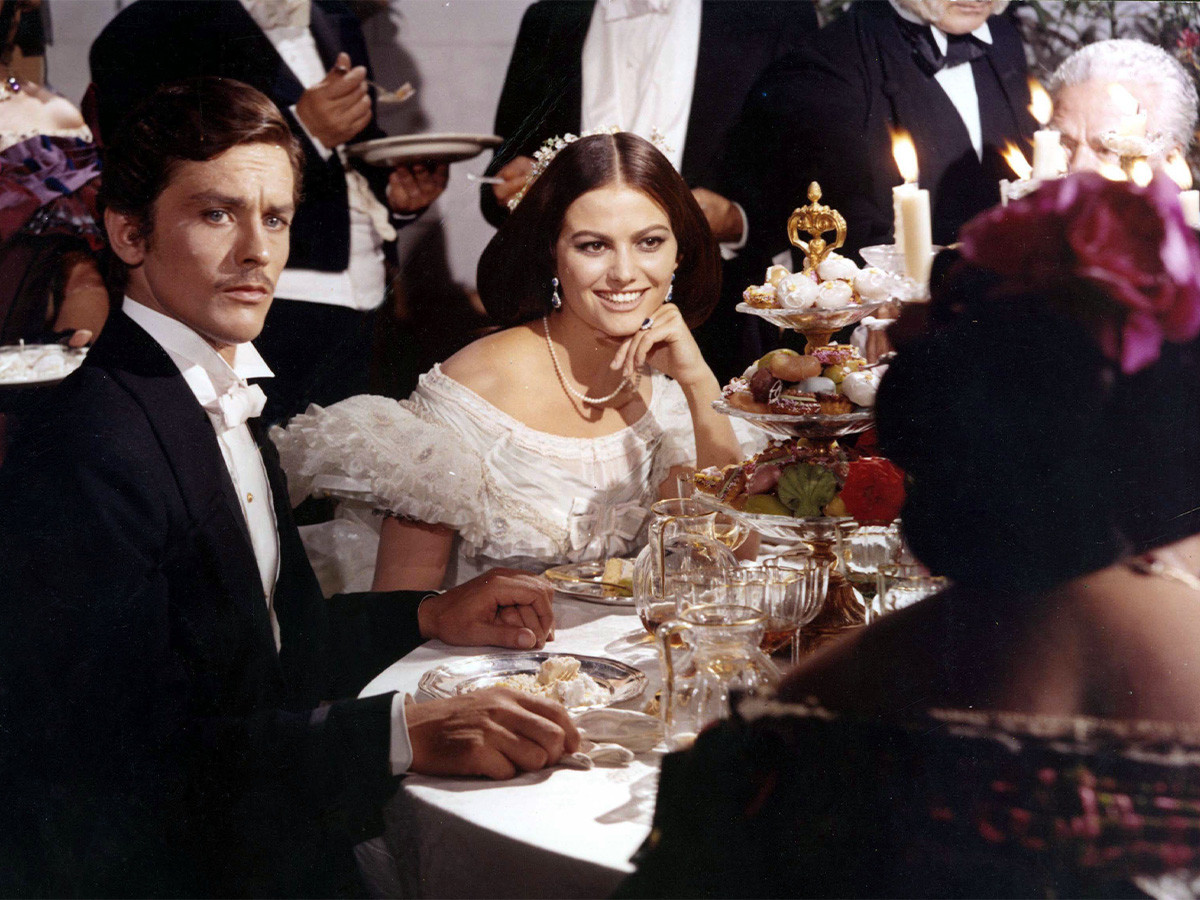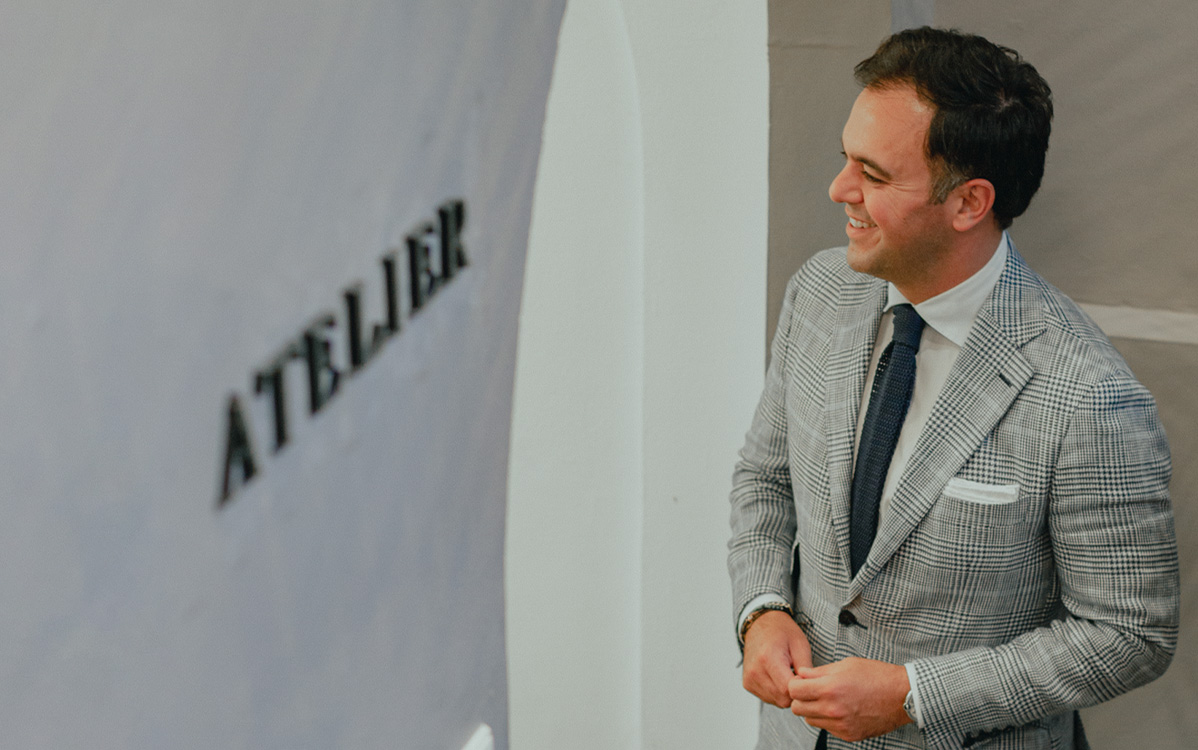

The Leopard might be the best film you’ve never seen. One of cinema’s greatest spectacles, it’s an epic Martin Scorsese listed as being in his top five, and can only be compared to films like The Godfather and Gone with the Wind in terms of scale. Directed by Luchino Visconti and adapted from Giuseppe Tomasi di Lampedusa’s novel of the same name, it stars Burt Lancaster, Alain Delon and Claudia Cardinale in their primes, which is reason alone to watch it.
The tale follows a Sicilian prince (Lancaster) as he tries to maintain the nobility of his family during the Risorgimento, the 19th century uprising that aimed to unify Italy into a single state. With its sweeping atmospheric score, achingly beautiful, sun-soaked cinematography and epic, large-scale battles, The Leopard is captivatingly nostalgic. And then there are the clothes.


Take a look at the film stills and at first glance you’d be forgiven for thinking they were Realist paintings of 1860s Sicily. Visconti was known for his attention to detail, so anything less would have been a failure. It just so happened his costume designer felt the same way. Five time Academy Award nominated Piero Tosi was arguably the only man for the job, largely because of his unwavering desire for period correctness.
Still, Visconti pushed his boundaries, “essentially lock[ing] Tosi in a room with firm instructions to produce several design options for each character by the end of every day,” according to Hamish Bowles. The two became obsessed with fabric and cut, sacrificing historic costumes for their trims and buttons, and even employing artisans to weave new fabrics from scratch. But they didn’t stop there. The New York Times noted in 2006 that “the red shirts worn by Garibaldi’s soldiers in the battle for Palermo were famously soaked in tea, left in the sun, buried, re-dipped, re-sunned and reburied for extra worn-in verisimilitude.” Famously, Claudia Cardinale’s corsets were so tight she couldn’t sit down between takes.



The period tailoring, too, was spot on. In 1860, when the film was set, the three-piece suit was the default dress for men from middle to the upper classes. The precursor to the modern day lounge suit, this formal look consisted of a black frock coat, a waistcoat and contrasting grey trousers, worn high to accentuate a narrow, hourglass silhouette. But what can we learn from a way of dressing that is more than antiquated by today’s standards? It’s arguably the way the characters wear their suits that’s more interesting.
In the same way Sean Connery’s Bond wore tailoring like a second skin, Lancaster’s Don Fabrizio wears his with imposing confidence. His powerful physique is bolstered by his form-fitting frock coats and face-framing wing collar shirts, which allow him to move with grace – he is the leopard, after all. It’s something to perhaps consider for your next formal engagement. There might be little need nowadays for white, or even black tie, but when the occasion calls, wear it with intention and you’ll look all the better for it.

Henry Poole: The Benchmark for Tailored Tradition

Take a tour through Alan See’s Hong Kong

Shirts for Sophisticated Home-Working

Pride of place: Ettemadis
Cotonificio Albini S.p.A. - Via Dr. Silvio Albini 1, 24021 Albino (BG) – Italy
Società con unico socio - diretta e coordinata da Albini Group S.p.A.
P.I. 01884530161 - C.F. 08743540158 - Iscritta al Registro Imprese di Bergamo - REA 244649
Capitale sociale sottoscritto e versato € 11.170.960